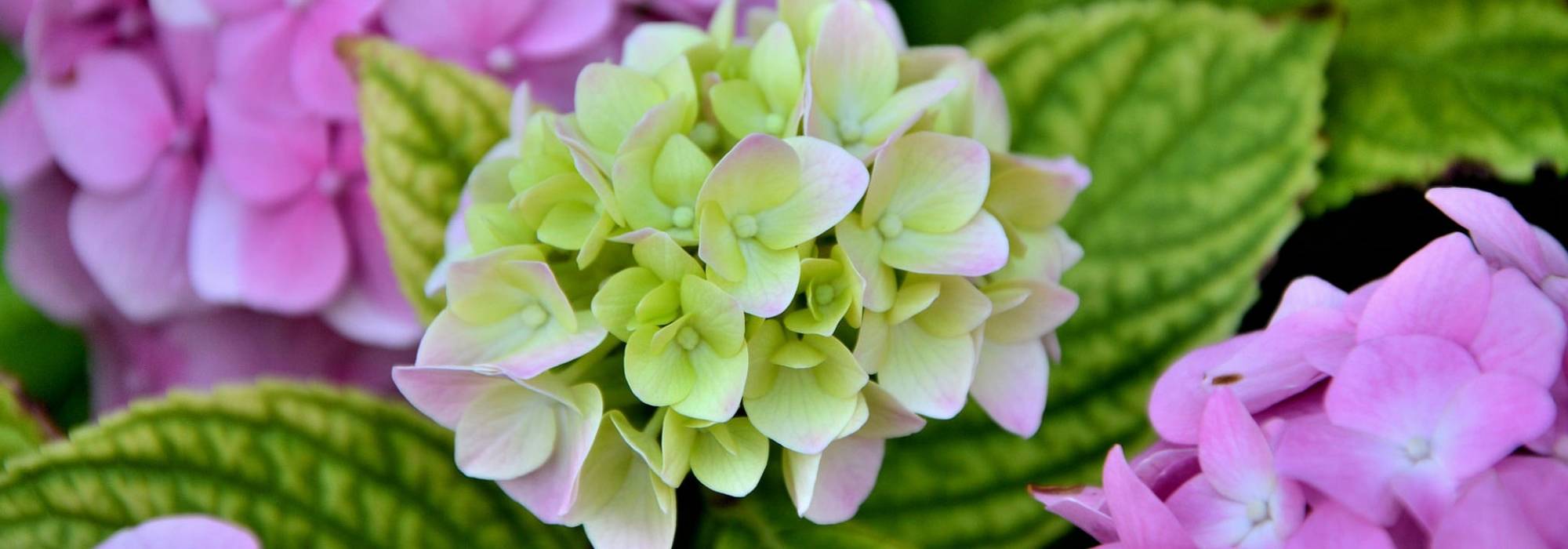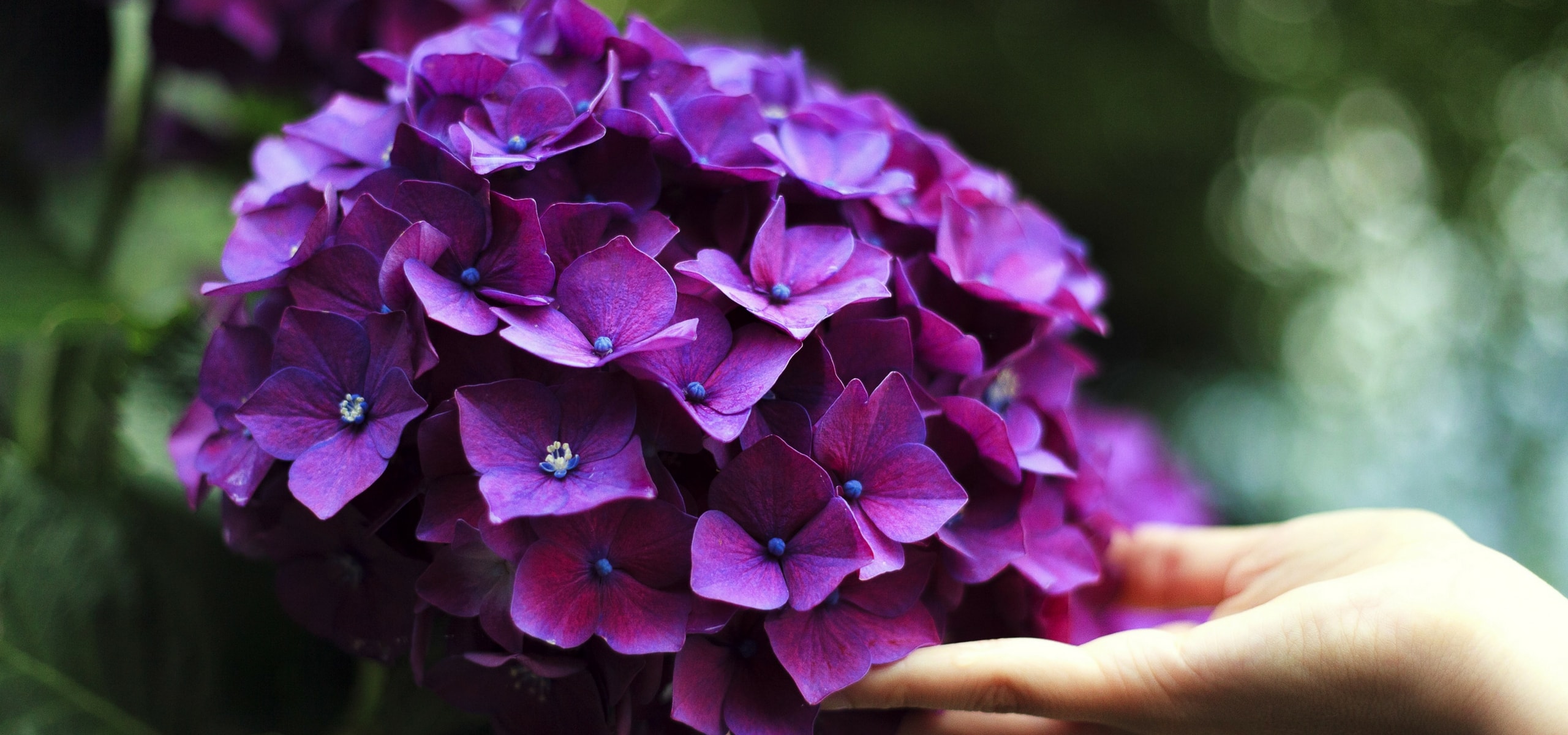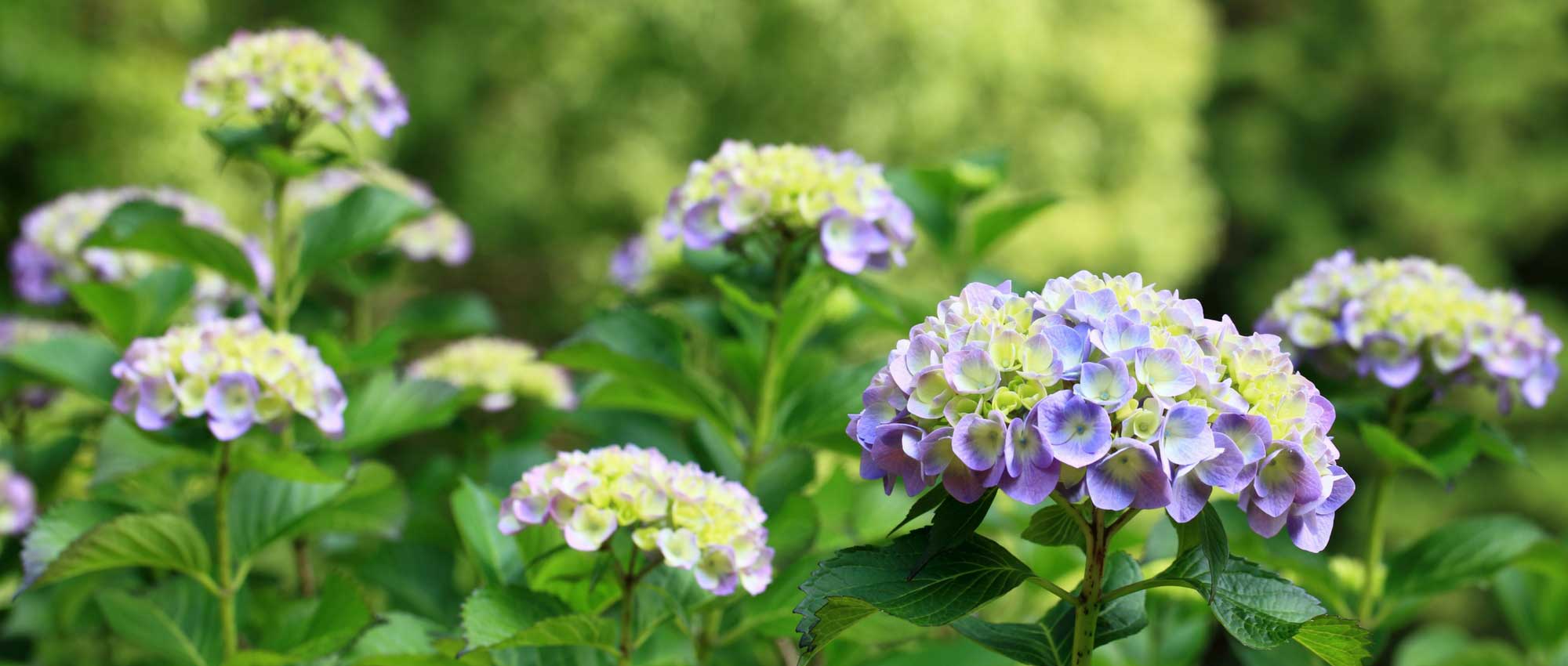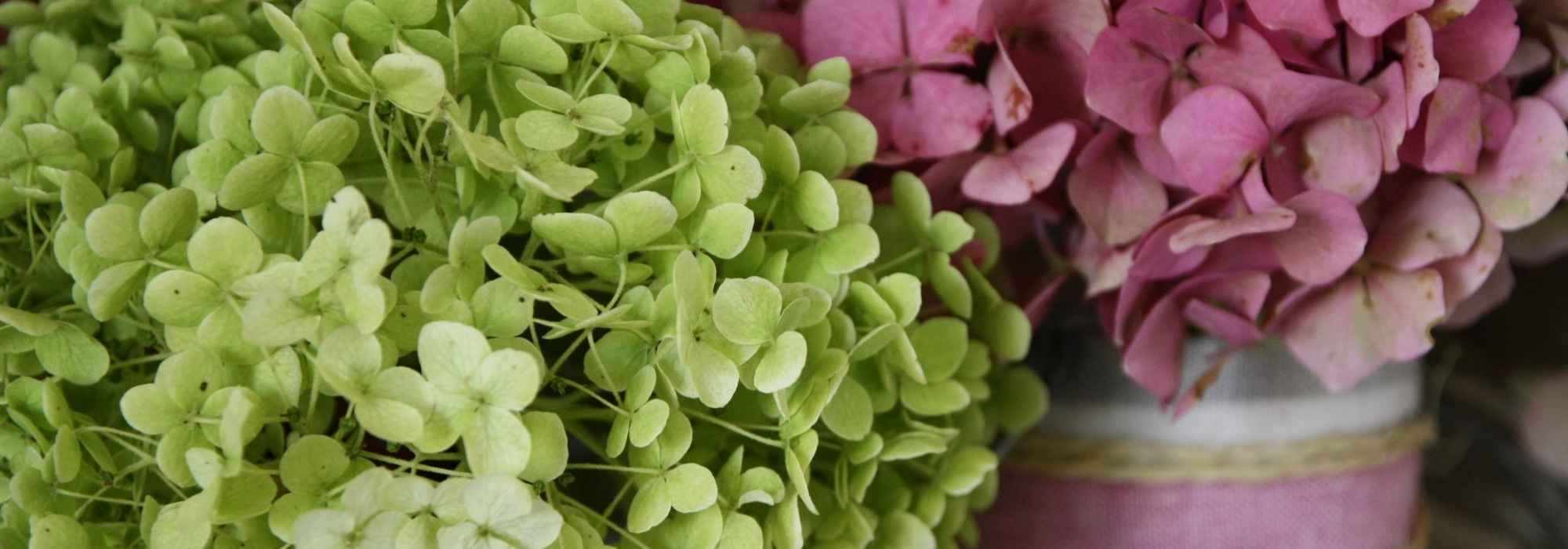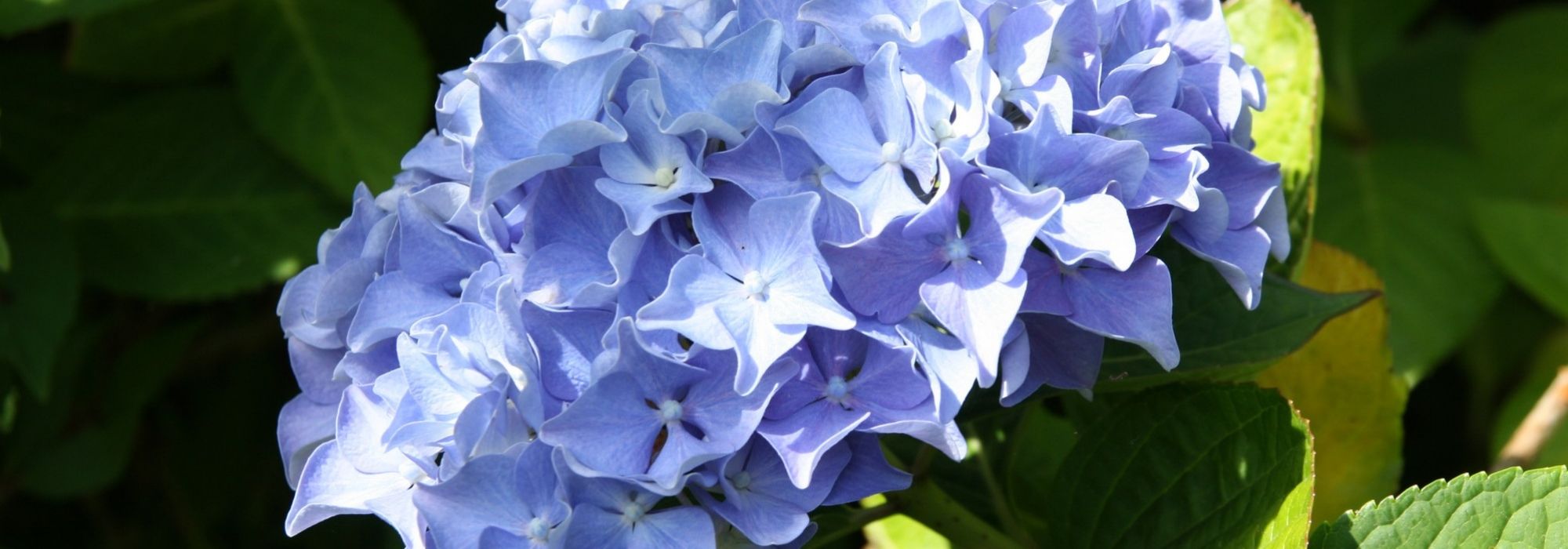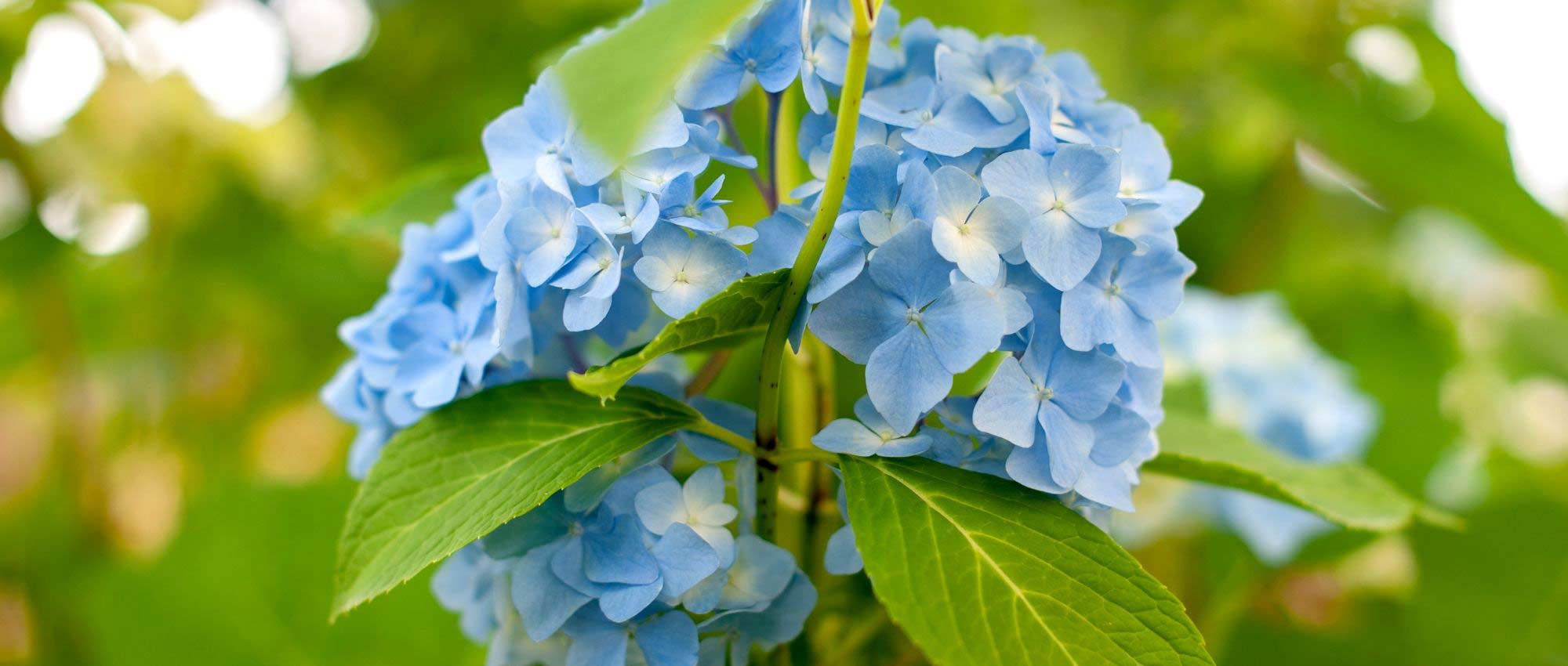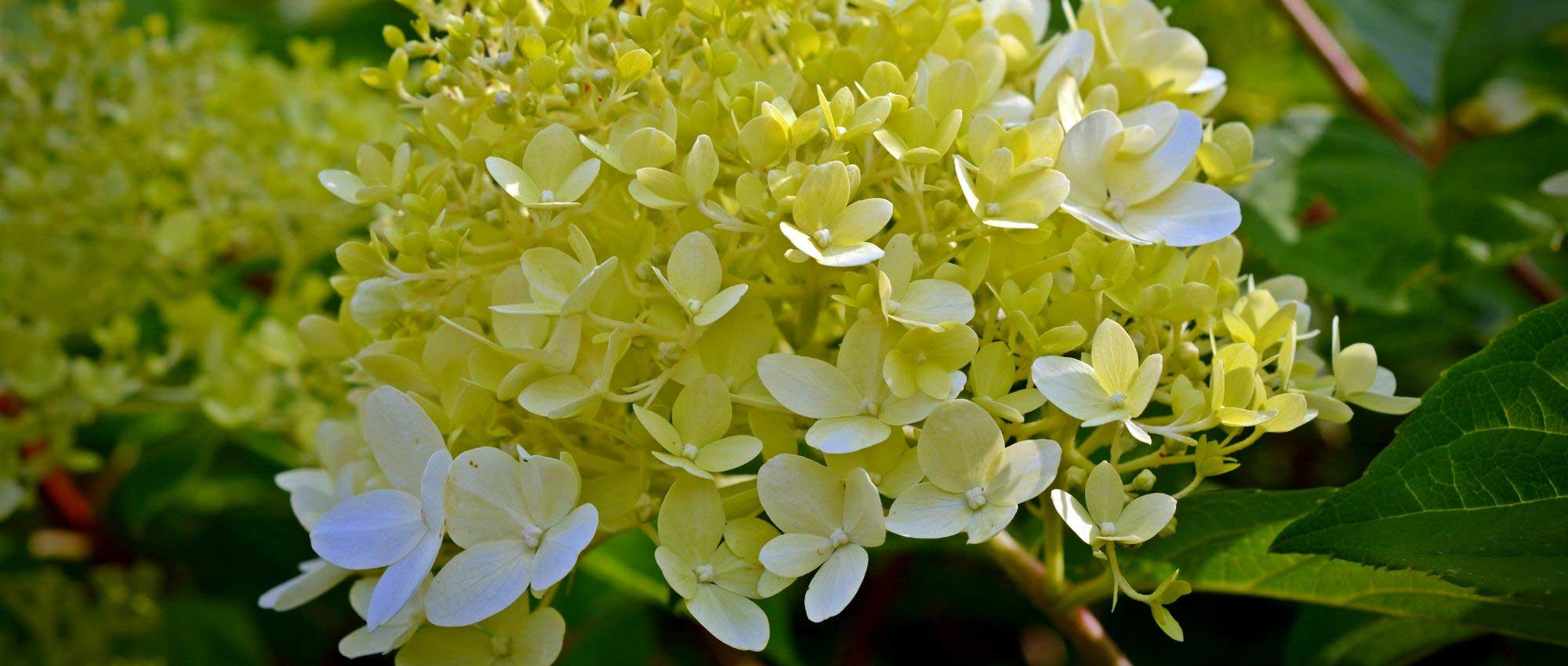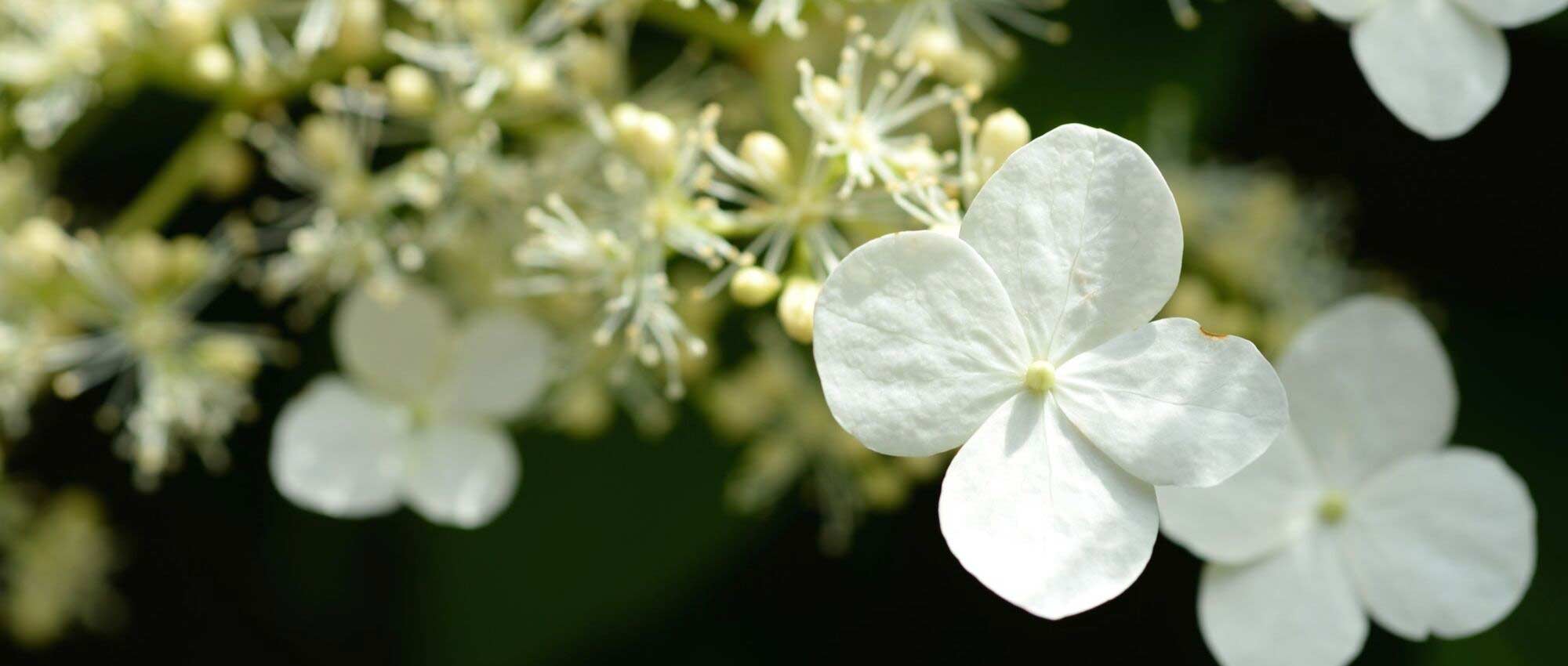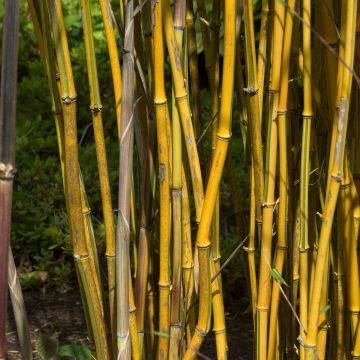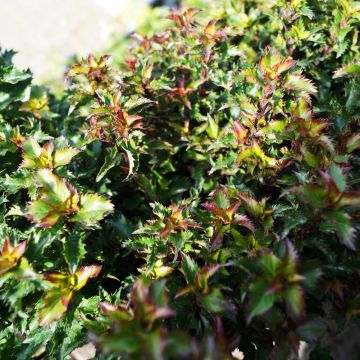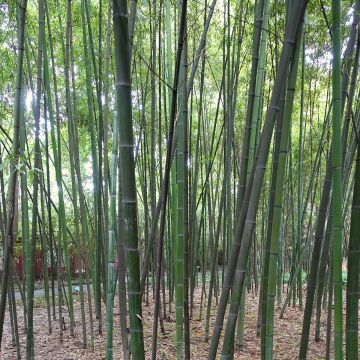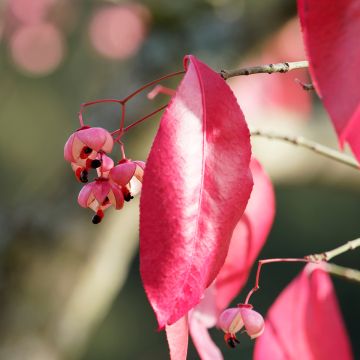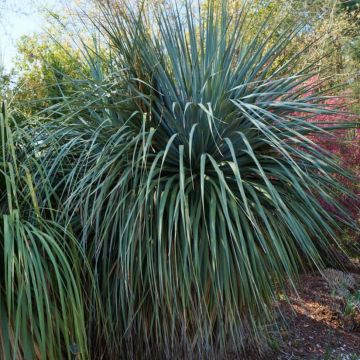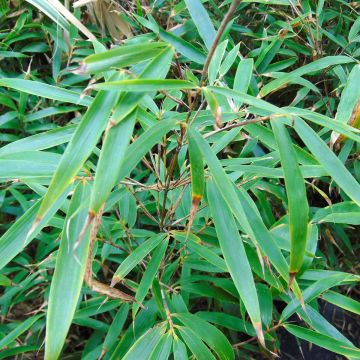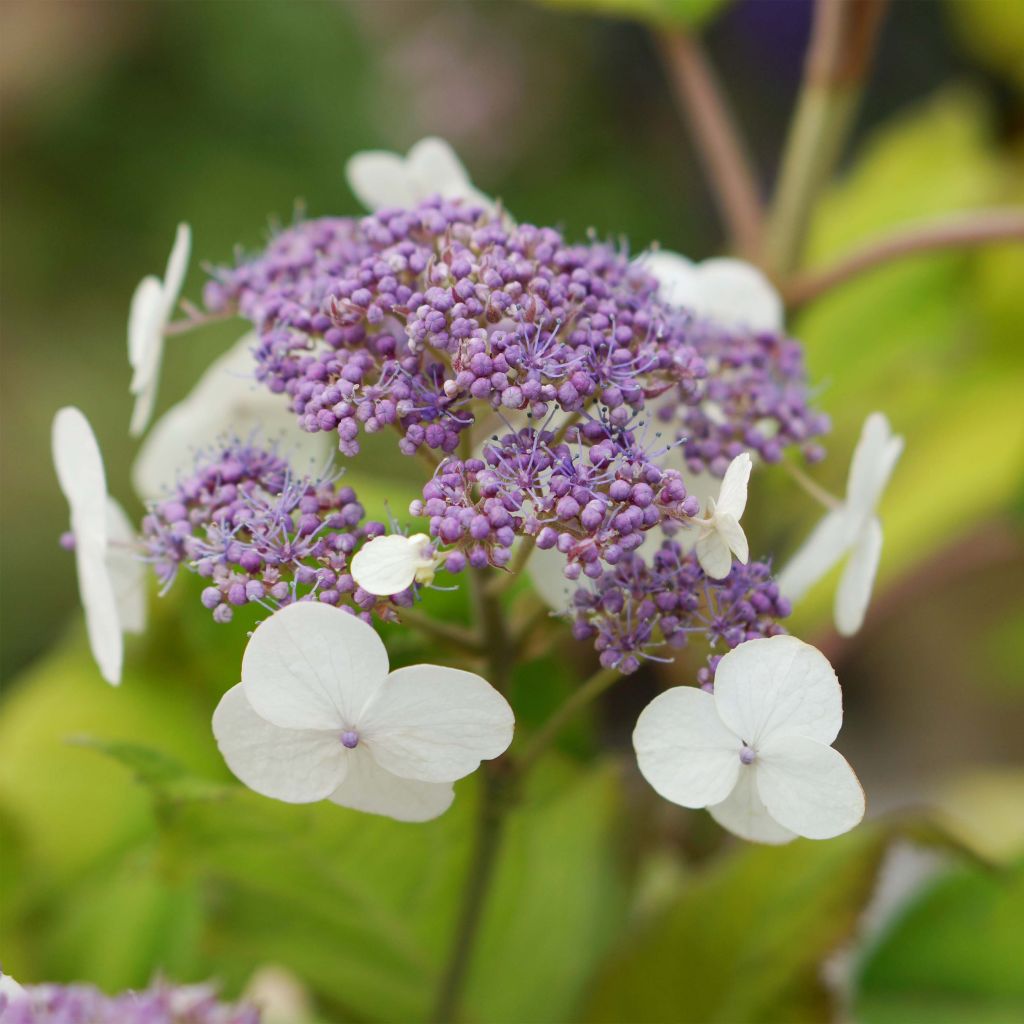

Hydrangea aspera subsp. sargentiana Goldrush
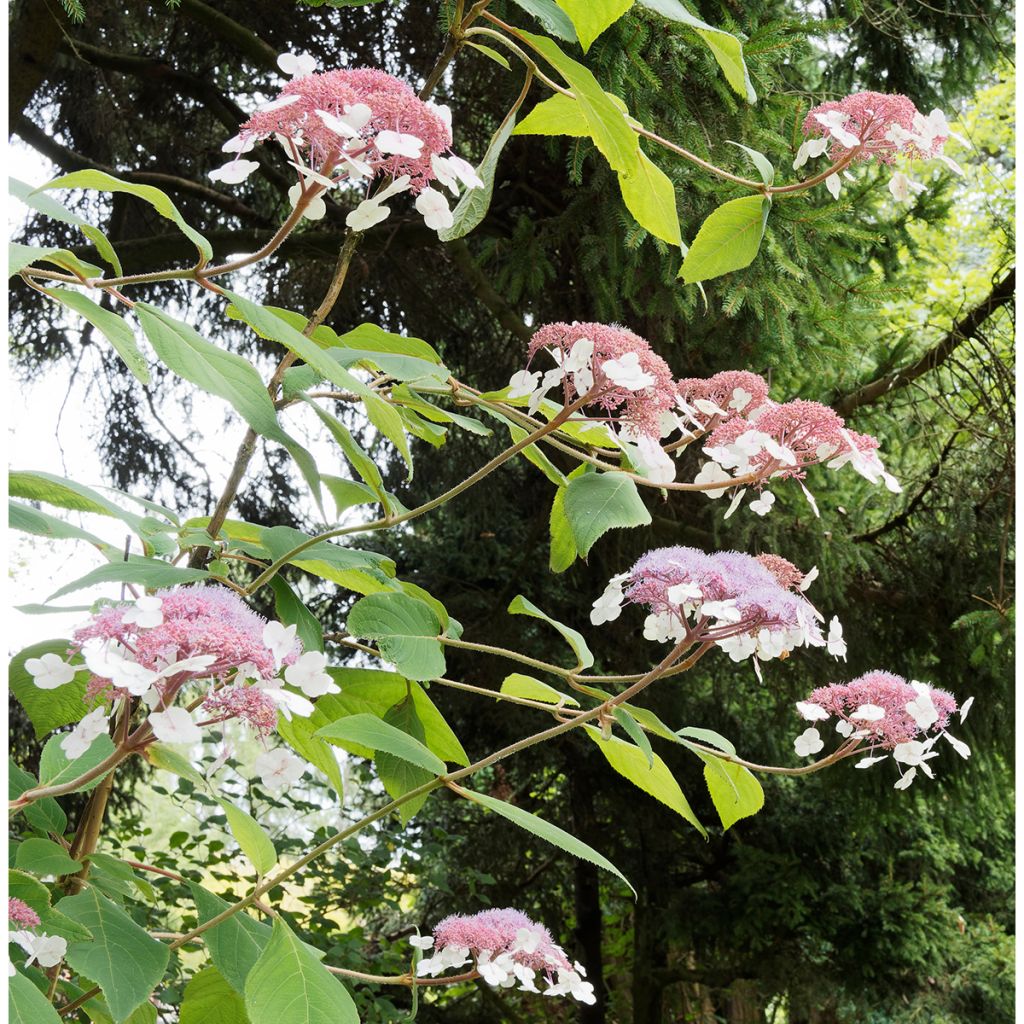

Hydrangea aspera subsp. sargentiana Goldrush
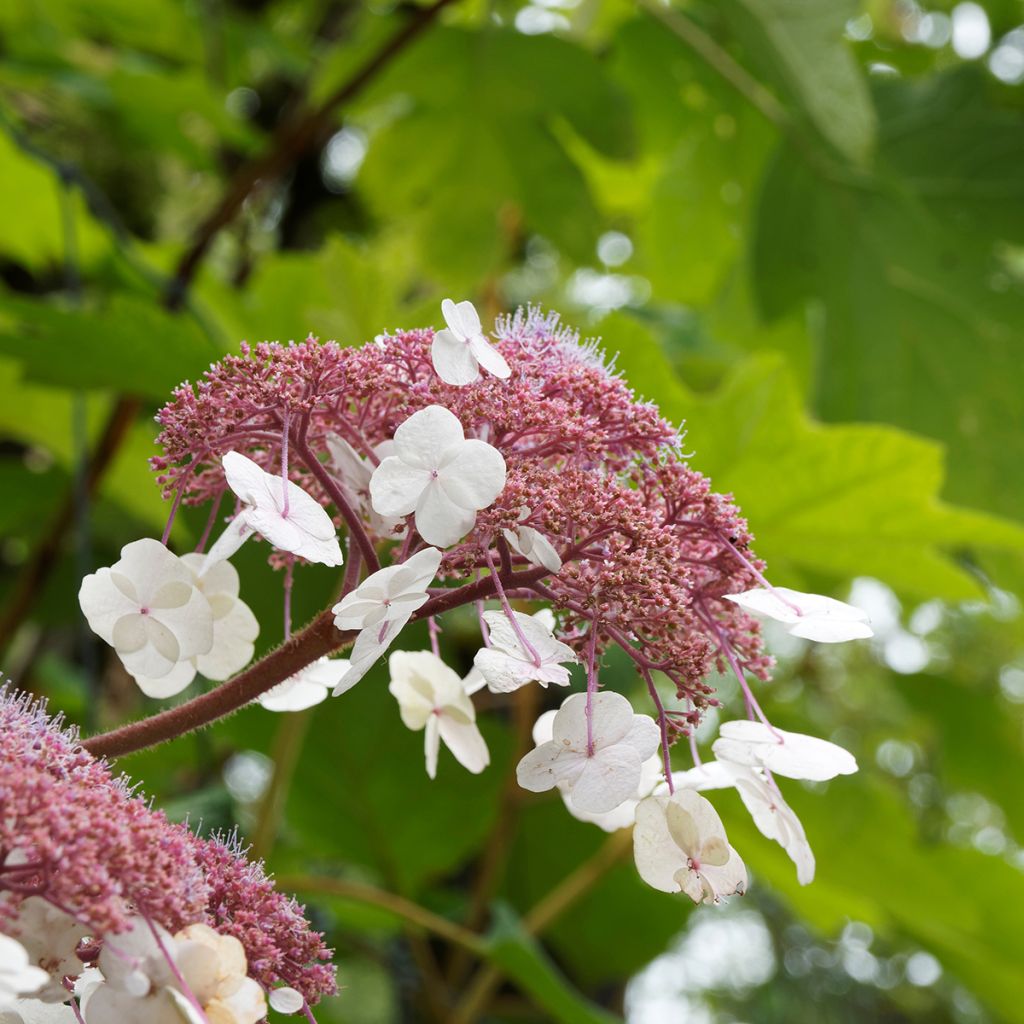

Hydrangea aspera subsp. sargentiana Goldrush
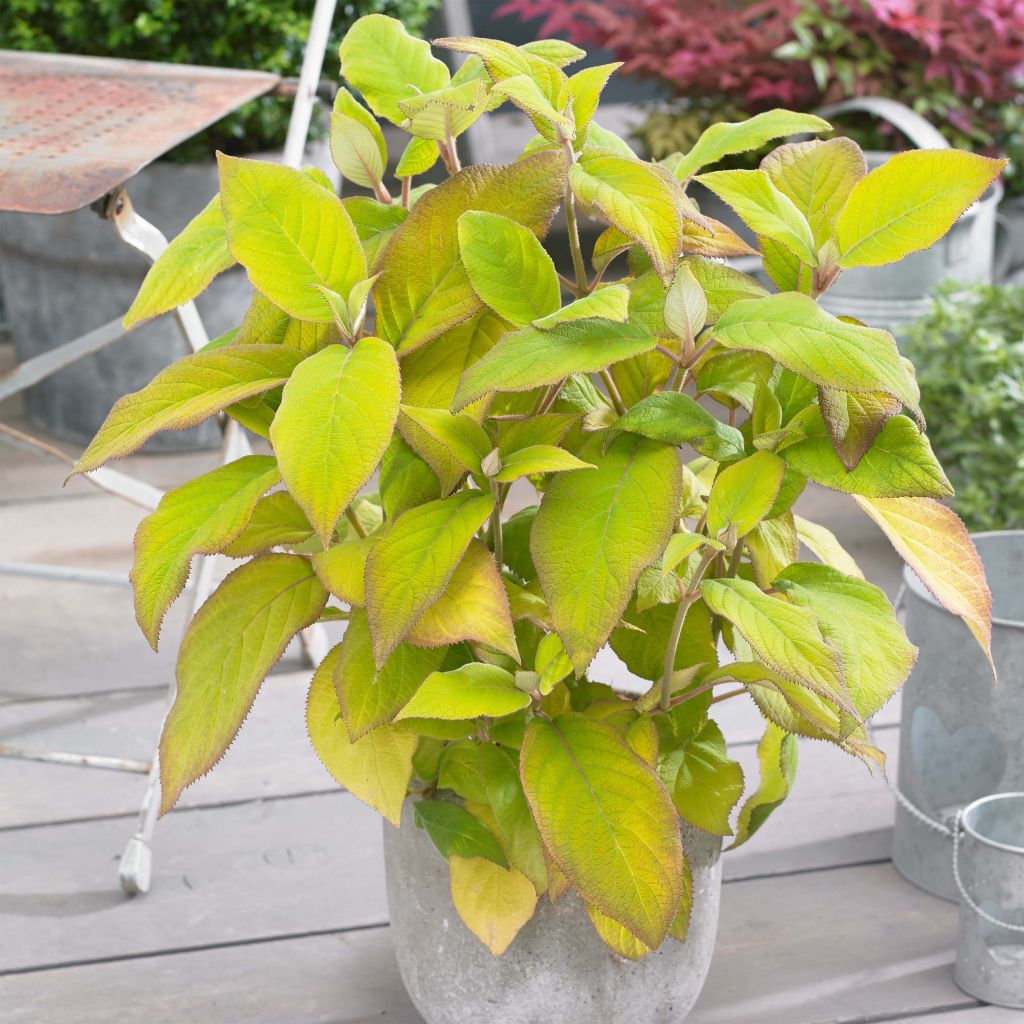

Hydrangea aspera subsp. sargentiana Goldrush
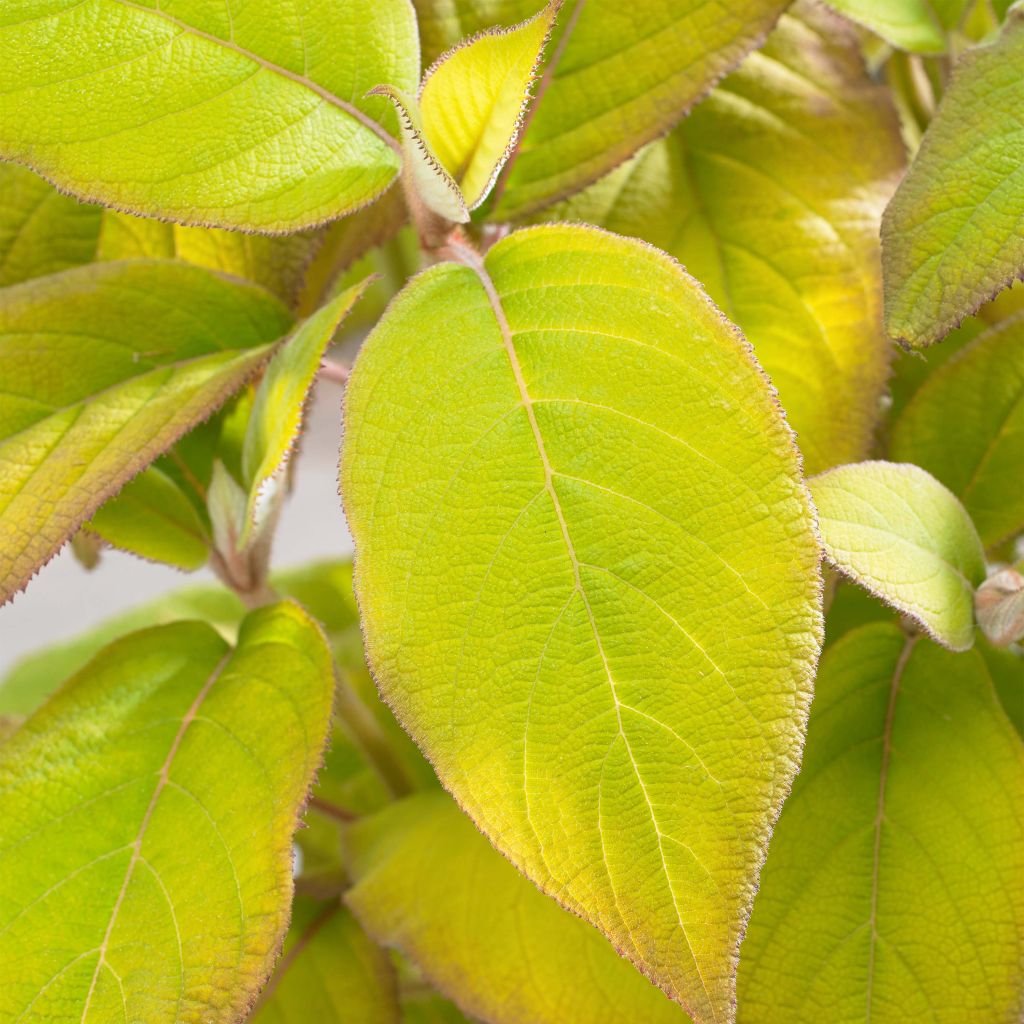

Hydrangea aspera subsp. sargentiana Goldrush
Hydrangea aspera subsp. sargentiana Goldrush
Hydrangea aspera subsp. sargentiana Goldrush
Rough-leaved Hydrangea, Sargent's Hydrangea
Marvelous! Particularly attractive foliage and flowering very bright.
France, 21/04/2020
Special offer!
Receive a €20 voucher for any order over €90 (excluding delivery costs, credit notes, and plastic-free options)!
1- Add your favorite plants to your cart.
2- Once you have reached €90, confirm your order (you can even choose the delivery date!).
3- As soon as your order is shipped, you will receive an email containing your voucher code, valid for 3 months (90 days).
Your voucher is unique and can only be used once, for any order with a minimum value of €20, excluding delivery costs.
Can be combined with other current offers, non-divisible and non-refundable.
Home or relay delivery (depending on size and destination)
Schedule delivery date,
and select date in basket
This plant carries a 24 months recovery warranty
More information
We guarantee the quality of our plants for a full growing cycle, and will replace at our expense any plant that fails to recover under normal climatic and planting conditions.

Does this plant fit my garden?
Set up your Plantfit profile →
Description
The Hydrangea aspera 'Goldrush' caused a sensation at the 2018 Chelsea Flower Show. This brand new selection, derived from a spectacular botanical hydrangea, stands out for its unique foliage: its large velvety leaves are golden, flecked with orange, then turn dark yellow before gradually turning dark green at the end of summer, during flowering. They are large, slightly bulging flower heads invariably mauve-lavender, set with a few white florets, with shades that are not influenced by soil pH. This slightly suckering variety has the appearance of a bushy fern in the shade of an understory. Although its vigour is more suited to large spaces, the bush can be fairly easily contained through pruning. "Goldrush," with its presence, exotic character and ease of cultivation in ordinary but moist soil, is a sensational plant.
Hydrangea aspera is a large, hardy bush that belongs to the Hydrangeaceae family. It is native to southern and eastern Asia and has a broad range of variations. The plant is a relative of hydrangeas, with big leaves and ball-shaped inflorescences. The subspecies Sargentiana, which was once part of Hydrangea aspera, is now considered a separate species within the family of hydrangeas. The plant is commonly found in the dense forests of central China, covering the valleys and mountain slopes. It was introduced to Europe in 1908.
The 'Goldrush' variety was discovered in 2012 by René Coonen of the Boomkwekerij Coonen nursery in the Netherlands. It is a hybrid of H. aspera subsp. sargentiana that maintains a stable, golden colour. Its young foliage is distinctively golden compared to the standard variety. 'Goldrush' grows into a beautiful, bushy plant with erect main branches and more flexible secondary branches that arch slightly, giving it a round and spreading shape with occasional irregularities. Under optimal conditions, it can grow up to 2.5 meters (8 ft 2 in) in all directions. The flowering period lasts three weeks, from the end of July to the beginning of August, shorter than other hydrangeas. The flower head is 25 cm (9.8 in) wide consisting of small flowers arranged in an umbrella shape. Sterile flowers, larger in size, are few in number and form a sparse crown around the small fertile flowers, with a powdery lavender mauve colour that opens into tiny pink-mauve flowers from the outside to the inside of the corymb. This particular arrangement is called a grandmother's bonnet. The foliage is composed of elongated leaves up to 30 cm (11.8 in) long, with deep veins and a slightly downy, serrated surface. The leaves turn beautiful autumn colours before falling, and the branches are covered with rough hairs that fall off as the plant ages.
'Goldrush' likes cool environments with light shade or partial shade, but it is one of the few, along with Hydrangea quercifolia and its varieties, to be indifferent to the presence of limestone in the soil. It will also thrive in an acidic soil bed, along with other hydrangeas, Kalmia, or Azalea, for example. Hydrangea aspera sargentiana 'Goldrush' allows for the creation of a superb backdrop, flowering of a free hedge with fragrant viburnums, large deciduous euonymus, or the edge of a grove or in the undergrowth. But plant it near a path or a north or east-facing window, as it would be a shame not to enjoy its unique personality.
Hydrangea aspera subsp. sargentiana Goldrush in pictures


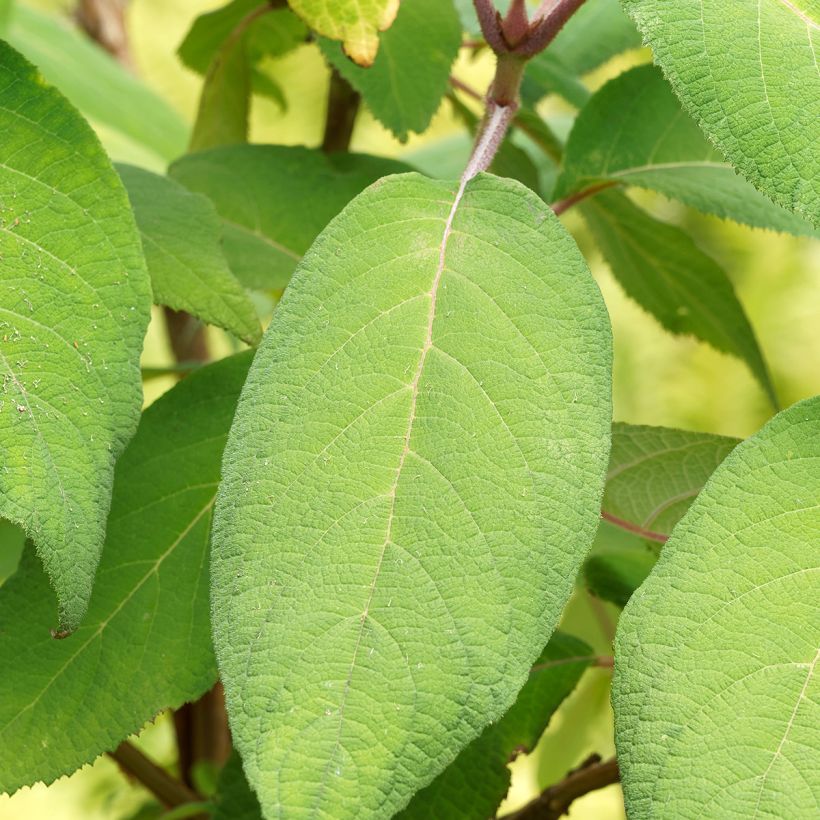

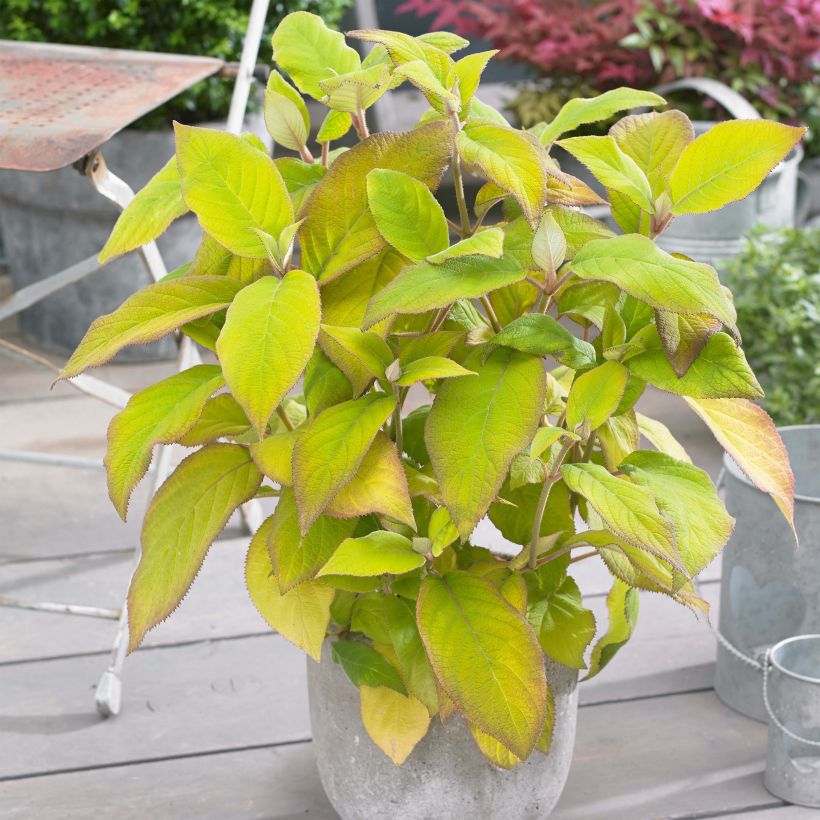

Plant habit
Flowering
Foliage
Botanical data
Hydrangea
aspera subsp. sargentiana
Goldrush
Hydrangeaceae
Rough-leaved Hydrangea, Sargent's Hydrangea
Cultivar or hybrid
Planting and care
If you want to plant Hydrangea aspera ssp. sargentiana Goldrush, choose a spot that is partially shaded or gently sunny. If your soil is very chalky, dig a hole and fill it with a mixture of garden soil, leaf compost, and ericaceous soil. This variety of hydrangea usually grows well in deep, well-drained soil that remains relatively moist in summer. Adding well-rotted manure or compost can be helpful. It is essential to water the plant adequately at the time of planting and during the first two years after planting. In case of prolonged drought during the summer, watering occasionally is recommended. Stop all watering after September. In cold regions, protect the stumps with a mulch of dead leaves. Keep in mind that this type of hydrangea is not suitable for container cultivation because it grows large. It will thrive better in the ground.
Planting period
Intended location
Care
Planting & care advice
-
, onOrder confirmed
Reply from on Promesse de fleurs
Similar products
Haven't found what you were looking for?
Hardiness is the lowest winter temperature a plant can endure without suffering serious damage or even dying. However, hardiness is affected by location (a sheltered area, such as a patio), protection (winter cover) and soil type (hardiness is improved by well-drained soil).

Photo Sharing Terms & Conditions
In order to encourage gardeners to interact and share their experiences, Promesse de fleurs offers various media enabling content to be uploaded onto its Site - in particular via the ‘Photo sharing’ module.
The User agrees to refrain from:
- Posting any content that is illegal, prejudicial, insulting, racist, inciteful to hatred, revisionist, contrary to public decency, that infringes on privacy or on the privacy rights of third parties, in particular the publicity rights of persons and goods, intellectual property rights, or the right to privacy.
- Submitting content on behalf of a third party;
- Impersonate the identity of a third party and/or publish any personal information about a third party;
In general, the User undertakes to refrain from any unethical behaviour.
All Content (in particular text, comments, files, images, photos, videos, creative works, etc.), which may be subject to property or intellectual property rights, image or other private rights, shall remain the property of the User, subject to the limited rights granted by the terms of the licence granted by Promesse de fleurs as stated below. Users are at liberty to publish or not to publish such Content on the Site, notably via the ‘Photo Sharing’ facility, and accept that this Content shall be made public and freely accessible, notably on the Internet.
Users further acknowledge, undertake to have ,and guarantee that they hold all necessary rights and permissions to publish such material on the Site, in particular with regard to the legislation in force pertaining to any privacy, property, intellectual property, image, or contractual rights, or rights of any other nature. By publishing such Content on the Site, Users acknowledge accepting full liability as publishers of the Content within the meaning of the law, and grant Promesse de fleurs, free of charge, an inclusive, worldwide licence for the said Content for the entire duration of its publication, including all reproduction, representation, up/downloading, displaying, performing, transmission, and storage rights.
Users also grant permission for their name to be linked to the Content and accept that this link may not always be made available.
By engaging in posting material, Users consent to their Content becoming automatically accessible on the Internet, in particular on other sites and/or blogs and/or web pages of the Promesse de fleurs site, including in particular social pages and the Promesse de fleurs catalogue.
Users may secure the removal of entrusted content free of charge by issuing a simple request via our contact form.
The flowering period indicated on our website applies to countries and regions located in USDA zone 8 (France, the United Kingdom, Ireland, the Netherlands, etc.)
It will vary according to where you live:
- In zones 9 to 10 (Italy, Spain, Greece, etc.), flowering will occur about 2 to 4 weeks earlier.
- In zones 6 to 7 (Germany, Poland, Slovenia, and lower mountainous regions), flowering will be delayed by 2 to 3 weeks.
- In zone 5 (Central Europe, Scandinavia), blooming will be delayed by 3 to 5 weeks.
In temperate climates, pruning of spring-flowering shrubs (forsythia, spireas, etc.) should be done just after flowering.
Pruning of summer-flowering shrubs (Indian Lilac, Perovskia, etc.) can be done in winter or spring.
In cold regions as well as with frost-sensitive plants, avoid pruning too early when severe frosts may still occur.
The planting period indicated on our website applies to countries and regions located in USDA zone 8 (France, United Kingdom, Ireland, Netherlands).
It will vary according to where you live:
- In Mediterranean zones (Marseille, Madrid, Milan, etc.), autumn and winter are the best planting periods.
- In continental zones (Strasbourg, Munich, Vienna, etc.), delay planting by 2 to 3 weeks in spring and bring it forward by 2 to 4 weeks in autumn.
- In mountainous regions (the Alps, Pyrenees, Carpathians, etc.), it is best to plant in late spring (May-June) or late summer (August-September).
The harvesting period indicated on our website applies to countries and regions in USDA zone 8 (France, England, Ireland, the Netherlands).
In colder areas (Scandinavia, Poland, Austria...) fruit and vegetable harvests are likely to be delayed by 3-4 weeks.
In warmer areas (Italy, Spain, Greece, etc.), harvesting will probably take place earlier, depending on weather conditions.
The sowing periods indicated on our website apply to countries and regions within USDA Zone 8 (France, UK, Ireland, Netherlands).
In colder areas (Scandinavia, Poland, Austria...), delay any outdoor sowing by 3-4 weeks, or sow under glass.
In warmer climes (Italy, Spain, Greece, etc.), bring outdoor sowing forward by a few weeks.






























